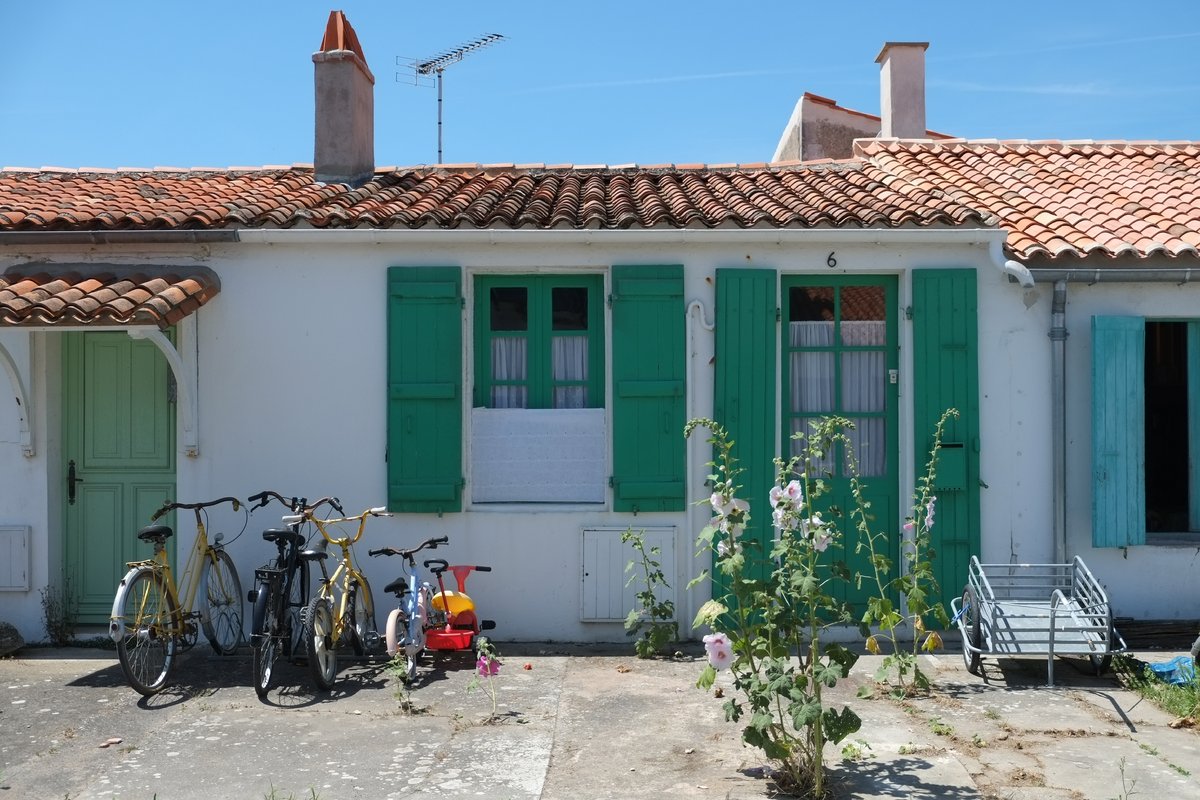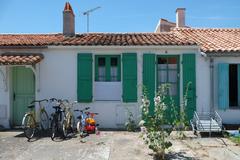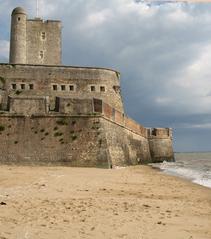
Chai 6 Rue Napoléon, Île-d’Aix, France: Visiting Hours, Tickets, and Travel Guide
Date: 14/06/2025
Introduction
Nestled in the heart of Île-d’Aix, the Chai at 6 Rue Napoléon stands as a testament to the island’s rich history and evolving culture. Originally serving as a storage facility for agricultural and maritime goods in the 19th century, this protected building offers visitors a unique glimpse into Île-d’Aix’s transformation from a strategic military outpost to a tranquil civilian community. While the Chai is not open for interior visits, its robust stone façade and historical context make it a must-see for anyone interested in French heritage and architecture (communes.com; Îles du Ponant).
This comprehensive guide covers the Chai’s historical significance, practical visitor information, nearby attractions, and essential travel tips, ensuring you experience the best of Île-d’Aix’s heritage.
Historical and Architectural Context
The Emergence and Role of the Chai
The Chai at 6 Rue Napoléon exemplifies 19th-century Atlantic coastal architecture, designed to withstand harsh maritime conditions and serve the island’s evolving needs. On Île-d’Aix, the term “chai” refers to multipurpose storage structures essential for local commerce and self-sufficiency (communes.com). These buildings were vital for storing wine, agricultural produce, and fishing equipment, reflecting the pragmatic lifestyle of the islanders (cityzeum.com).
Rue Napoléon and the Island’s Napoleonic Heritage
Rue Napoléon, the street on which the Chai is located, is named in honor of Napoleon Bonaparte, who spent his last days on French soil here in 1815 before his exile to Saint Helena (musees-nationaux-malmaison.fr). The area is characterized by its ensemble of protected 19th-century buildings, including chais and houses that narrate the island’s transition from military stronghold to civilian haven (Mary Anne’s France).
Heritage Protection
Recognized for its cultural value, the Chai’s façade and roof were protected by decree in 1931, underscoring the importance of preserving Île-d’Aix’s unique architectural heritage (communes.com). This protection ensures that the building retains its original character and continues to tell the story of the island’s robust local traditions.
Visiting the Chai at 6 Rue Napoléon: Essential Information
Visiting Hours and Access
The Chai is privately owned and not open for interior visits, but its exterior can be freely admired from Rue Napoléon. The street is pedestrian-friendly, accessible by foot or bicycle, and forms part of many heritage walking routes (Mappy).
Tickets and Entry
No tickets are required to view the Chai from the outside. Access to Île-d’Aix is via ferry from Fouras, with seasonal schedules. The island’s car-free policy means all exploration is on foot or by bicycle (voyageway.com).
Accessibility
Most of the village, including Rue Napoléon, is flat and accessible. However, some older buildings may have narrow doorways or uneven surfaces. Comfortable walking shoes are recommended.
Facilities and Amenities
- Nearby Services: Public restrooms are available in the village center. Cafés, restaurants, and shops are within walking distance.
- Payment: While most venues accept cards, carrying some cash is advisable due to occasional connectivity issues.
Travel Tips
- Best Time to Visit: Late spring through early autumn for optimal ferry service and weather.
- Combine Visits: Explore the Musée Napoléonien and Fort Liédot for a deeper understanding of the island’s history.
- Sustainability: Respect local customs, use recycling bins, and support small businesses to help preserve the island’s character.
Nearby Attractions
Musée Napoléonien
Housed in the former governor’s residence, the Musée Napoléonien presents artifacts and exhibits related to Napoleon’s final days in France. Highlights include period furniture, personal effects, and the famous Clock Room, where 52 clocks are stopped at the hour of Napoleon’s death (musees-nationaux-malmaison.fr; sejourspatrimoine.com).
- Opening Hours: Daily from April to September; closed Tuesdays in the off-season.
- Tickets: Available onsite and via the Affluences platform.
- Location: 6 Rue Napoléon, 17123 Île-d’Aix.
Fort Liédot
A 19th-century military fortification located at the island’s northern tip, Fort Liédot is open from April to October and features exhibitions on military architecture and the island’s strategic role (cityzeum.com).
How to Get There
- By Ferry: Regular departures from Fouras (20-minute crossing). Seasonal ferries from Rochefort, La Rochelle, and other ports (Îles du Ponant).
- On the Island: No cars allowed; explore by foot or rent a bicycle near the ferry landing (Mary Anne’s France).
What to Do on Île-d’Aix
- Beaches: Enjoy sandy beaches such as Plage de l’Anse de la Croix and Plage aux Coquillages.
- Coastal Walks: Circumnavigate the island on foot or by bicycle, taking in views of the Atlantic and Fort Boyard.
- Nature and Birdwatching: Explore salt marshes and forests that support a variety of birdlife (iledaix.fr).
- Local Markets: Visit the village market for regional specialties and artisan crafts.
- Cultural Events: Check the official tourism calendar for festivals, exhibitions, and workshops.
Frequently Asked Questions (FAQ)
Q: Can I enter the Chai at 6 Rue Napoléon?
A: No, the Chai is privately owned and not open to the public, but its exterior can be admired from the street.
Q: Is there an entrance fee to see the Chai?
A: No, viewing from the street is free; ferry tickets to the island are required.
Q: Are there guided tours including the Chai?
A: Some local walking tours feature Rue Napoléon and its historic buildings. Check with the Île-d’Aix Tourist Office for schedules.
Q: What is the best way to get around Île-d’Aix?
A: On foot or by bicycle; the island is car-free.
Q: When is the best time to visit?
A: May to September offers the best weather and full access to attractions.
Practical Considerations
- Weather: Mild oceanic climate; bring layers and sun protection.
- Sustainability: Respect local wildlife and use designated paths.
- Emergency Services: A medical center and pharmacy are located in the village; dial 112 for emergencies.
Key Facts Summary Table
| Feature | Details |
|---|---|
| Address | 6 Rue Napoléon, 17123 Île-d’Aix, France |
| Visiting Hours | Exterior view anytime; interior not open to public |
| Entry | Free (ferry ticket required for island access) |
| Access | Ferry only; no cars allowed |
| Nearby Attractions | Musée Napoléonien, Fort Liédot, local markets |
| Facilities | Public restrooms in the village |
| Payment | Cash and cards (carry cash as backup) |
| Best Time to Visit | May–September |
| Contact | Île-d’Aix Tourist Office (website) |
Conclusion
The Chai at 6 Rue Napoléon encapsulates the enduring spirit and layered history of Île-d’Aix. While access is limited to its exterior, it remains a significant landmark within the island’s heritage-rich landscape. Pair your visit with nearby sites like the Musée Napoléonien and Fort Liédot, enjoy the island’s natural beauty, and immerse yourself in the unique, car-free atmosphere of Île-d’Aix. For the best experience, plan ahead, respect local customs, and take advantage of resources like the Île-d’Aix official tourism website and the Audiala app for maps and audio guides.
References and Further Reading
- communes.com
- musees-nationaux-malmaison.fr
- Îles du Ponant
- iledaix.fr
- sejourspatrimoine.com
- cityzeum.com
- Mary Anne’s France
- voyageway.com
- napoleon.org
- iledaix.fr/venir-sur-lile-d-aix/


